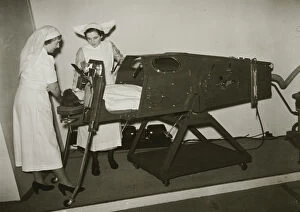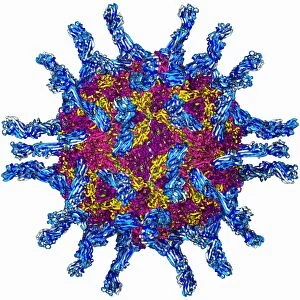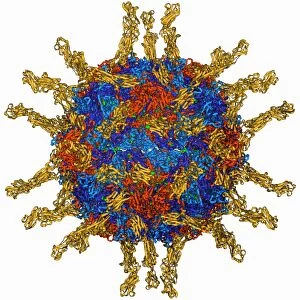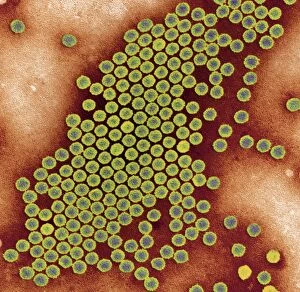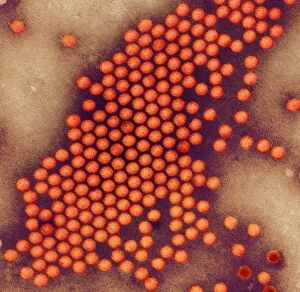Poliomyelitis Collection
Poliomyelitis, commonly known as polio, is a highly infectious viral disease that primarily affects children under the age of five
For sale as Licensed Images
Choose your image, Select your licence and Download the media
Poliomyelitis, commonly known as polio, is a highly infectious viral disease that primarily affects children under the age of five. This debilitating illness can cause paralysis and even death in severe cases. The iron lung, depicted in images such as "Iron lung at Lourdes med01_01_0369" and "Demonstrating an iron lung med01_01_0377, " was one of the few treatment options available during the polio epidemic. To understand this disease better, scientists have extensively studied its structure using molecular models like "Poliovirus type 3 capsid, molecular model F006 / 9686, " "Poliovirus type 3 capsid, molecular model F006 / 9532, " and "Poliovirus type 3 capsid, molecular model F006 / 9465. " These models provide insights into the intricate design of the virus's outer shell or capsid. The images titled "Human poliovirus, molecular model F006 / 9434" and "Human poliovirus, molecular model F006 / 9289" showcase detailed representations of the virus responsible for causing poliomyelitis. By studying these structures at a microscopic level, researchers aim to develop effective vaccines and antiviral treatments to combat this devastating disease. Microscopic views captured through techniques like TEM (Transmission Electron Microscopy) are shown in pictures such as "Polio virus particles, TEM C016 /9436" and "Polio virus particles artwork C016/9606. " These visuals allow us to witness firsthand how these tiny viral particles appear when magnified thousands of times their actual size. Despite advancements in medical science leading to successful vaccination campaigns worldwide against poliomyelitis over recent decades; it remains crucial to raise awareness about this contagious ailment.


